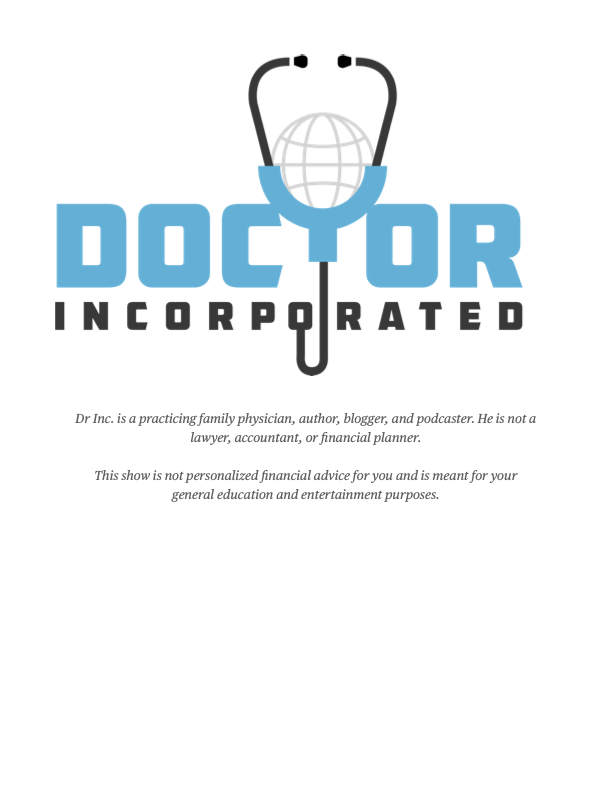
Hi everybody, this is Dr. Incorporated. I want to start by saying thank you to the scores of employed physicians of our country who have taken healthcare and put it on their backs. It really carried us through these many months that have been quite challenging in this country when it comes to health care. You now represent the majority of physicians in this country as employed doctors. And every one of you really plays a significant role in the way you take care of patients, the way you take care of your communities, and the way you take care of your families. I want to thank you for that hard work and for the service that you’ve dedicated yourself to in the world of medicine. I know it’s not often said to you that you’re appreciated, but I want to thank you today for what you’re doing in the world of healthcare.
Majority Physician Tribe
Today’s truth we’re going to cover is that employed doctors are now the majority tribe. Some recent statistics from the AMA now note that more than 50% of physicians in practice are employed in some capacity. This means that there are roughly 500,000 of you out there who fit into this category of employed physicians. It’s such a massive, growing group that is only going to continue to grow over the next many years. The data from Medscape and others note that nearly 80-plus percent of graduating residents are choosing employment as their preferred practice arrangement over independent practice or contracted care. The large number of us who are doing this are only going to continue to grow in numbers. I find it very interesting to think about this in my own life, as I’ve been employed now for over 25 years as a primary care doctor. It’s a choice that I made early on because of its simplicity and one that I’ve continued to make due to its simplicity.
As I’ve shared previously, I’ve now converted to what’s called an employee lite contract, which is a more progressive version of the standard or traditional employment contract, but still maintains a lot of the more common elements associated with employment. What I do know is that as the majority tribe we are choosing employment because it is like hitting the easy button to start practicing medicine after residency. What we get out of this employment model is a monthly paycheck that’s predictable, filled with benefits, and meets our family needs. . Quite honestly, I understand why doctors choose this route.
Employment increases burnout
But I’ve asked myself recently, why are doctors continuing to choose to be employed? Employment increases both the risk of burnout and the risk of provider dissatisfaction. Employed doctors make less money than our self-employed counter-parts. So, there’s kind of a downside to choosing employment in both the short term and the long term, however, many of us continue to pursue it.
So Why choose Employment?
Some of the things that I’ve come up with (and I’d be interested in your feedback in regards to this) is because it provides a safe harbor in uncertain times. I certainly recognize that today’s healthcare landscape seems corporately driven, out of our control, very complex, and uncertain in terms of its strategic direction under our government leaders. Choosing to sign up as an employed doctor provides a safe harbor that allows us to continue to simply practice medicine and get paid a fair market value compensation. In some regards, the complexity of medicine makes employment a simple choice to make. Most doctors consider themselves among the most intelligent groups of people in our country, and their wise assessment of the landscape points them towards employment rather than private practice.
“see one, Do one, Teach One” traditional employment
Our employment model choices are shrinking as well as residents and first-time attendings are basically offered the boilerplate traditional employment contract that favors your employer. So what most doctors focus on is the piece that they DO have some control over which is “Where do I want to live”. It’s the ultimate prize for making it through your grueling training. Choice, it’s so American! Interestingly, although you get to choose the community you want to live in, even if it’s increasingly not the same community that you work in. Those employment contracts are often created by your employer’s legal department with information asymmetry in play as you are asked to sign in good faith trusting in the fairness of the contract. Most physicians carefully observe the compensation, benefits, and signing bonus and if they align satisfactorily, they simply sign. This is no surprise given that our educators, mentors, and coaches in residency sign similar contracts. You know how it goes, “see one, do one, teach one”. Most all of them are employees of large institutional medical schools and the associated hospital systems that work in collusion together to funnel young doctors towards employment. The primary business model that residents see in their training are employed doctors. I don’t see many of those residents getting exposed to independent practicing physicians, or models of healthcare delivery that are anything different than employee-based programs.
Med School Debt
I suspect it’s the large med school debts, that now average $200-$300,000, that force med students and residents to avoid independent practice and partnership opportunities with all of their built-in extra costs. Medical trainees are somewhat shoe holed into choosing to start in a practice situation in which they get a guaranteed check and a guaranteed income that allows them to begin to pay down their loans right from the beginning. If they’re really lucky they might get some loan forgiveness built into their contract.
Business Illiteracy
There is just a lack of education about the business of medicine among physicians in trainingsu nowadays, as noted by 82% of medical students who feel they need a curriculum focus on this. This places doctors in increasingly less empowered positions to make medical business decisions about their future as they finish residency. This business illiteracy only forces doctors to blindly play into the hands of employers who provide them safe harbor in exchange for control over their professional lives. That loss of autonomy sets in motion the spiral towards burnout. As an example, most doctors don’t even know a more physician-friendly and progressive employment contract called “employment lite” exists. So when one adds physician unawareness on top of employers voluntarily withholding all contractual options to those same physicians, we all end up with traditional contracts that favor employers. Wouldn’t it be nice to be part of a union that helped our entire tribe at the negotiation table? But the feds have outlawed this, so it’s every person for themself. Individual doctors are usually no match for large and wise corporate legal departments.
summary
I think there are a number of reasons employed physicians are in a growing majority. I’m interested in your input about why you have chosen to be an employed physician, what makes it a better choice for you, and why you continue to be an employed physician. I know there are a lot of conversations we’ll have about the good, the bad, and the ugly when it comes to physician employment as we continue our journey on this site.
What do you think? Why are we the majority and why are we the growing majority?

Dr. Inc.






0 Comments